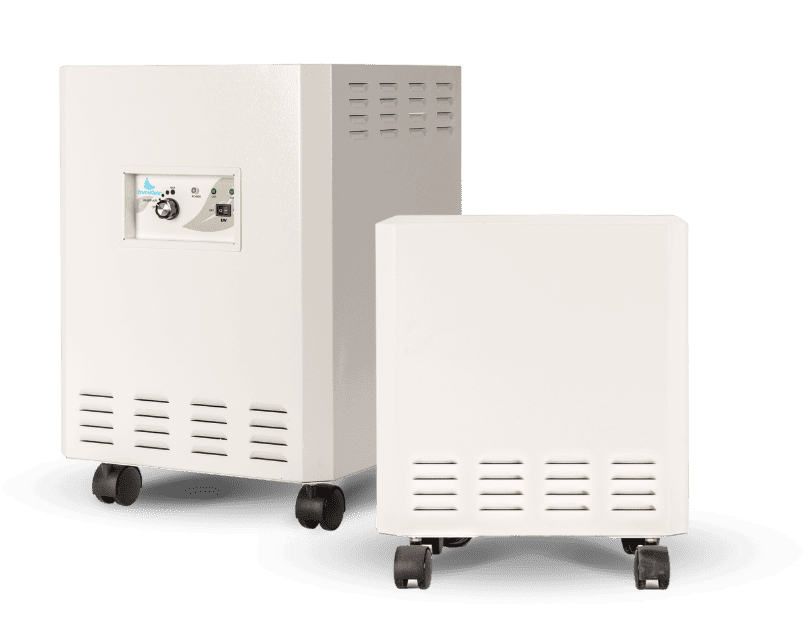Mold exposure can cause several symptoms ― some of which are very uncomfortable, but can mold cause headaches? If you experience pain or discomfort around your head or face when indoors, you might be dealing with a mold-related health issue.
This article looks at the effects of mold exposure and a few simple ways to identify mold-related symptoms.
Can Mold Cause Headaches?
Here’s a short answer: Yes, mold exposure can cause headaches. A 2019 study lists headaches among the common symptoms of dampness and mold in indoor environments.
However, experiencing a headache alone isn’t proof positive that you have mold or mildew growth in your home or office. The nagging pain in your head can be caused by a combination of several factors, many of which may have nothing to do with mold.
Here’s how to tell if the dull, throbbing pain in your head is caused by mold exposure.
Mold spores are tiny enough to float through the air and easily travel throughout indoor environments, leading to poor indoor air quality. Breathing in the spores can irritate the respiratory system and affect the sinuses.
When this happens, you will experience a constant, dull pain around your head and face area, like the forehead, cheekbone, inner ears, and the bridge of your nose. It might even feel like your eyes are popping out of their sockets in more severe cases.
Any of these discomforts are indications that something is messing with your respiratory system, causing sinus headaches.
Do You Have a Sinus Headache or Migraine?
Headaches caused by mold can become persistent if the source of the problem is not removed. This persistence is why many people mistake migraine for sinus headaches.
Why is understanding the difference between the two important? People often use over-the-counter nasal decongestants to relieve sinus headaches and the associated discomfort in the nasal passage. Using these temporary solutions for migraine will hardly produce long-lasting results.
Besides, nasal decongestants are easily addictive, so it is best to avoid them if you’re not sure you have a sinus headache.
A sinus headache is a dull ache often accompanied by a sensation of pressure around the head or face area. On the other hand, a migraine headache is a throbbing or pulsating pain in the head.
You likely have a migraine if your persistent headache is accompanied by one or more of the following symptoms:
- Sensitivity to noise
- Sensitivity to light
- Pulsing pain in the head that gets worse with physical activity
- Nausea
Headaches caused by exposure to mold often go hand in hand with allergic reactions and allergy symptoms, such as watery or itchy eyes, eye irritation, sneezing, and runny nose.
Here’s another way to know that mold exposure is the culprit for the pain in your head: the headache tends to get worse when you are at home or enter a particular building (known as sick building syndrome). While any combination of factors can result in sick building syndrome, mold is the leading cause.
5 Common Symptoms of Mold Exposure
Having answered the question, “Can mold cause headaches?” and discussed a few clues to know if the ache in your head is caused by mold, let’s see other common symptoms of mold exposure.
1. Fatigue
Mold-related fatigue is usually caused by long-term exposure to mold spores, making you feel a constant need to rest. People with chronic fatigue syndrome will likely experience increased symptoms when exposed to mold. This usually means feeling unrested even after a full night’s sleep, experiencing intense dizziness, and having severe joint pains.
Keep in mind that fatigue is not the same as tiredness. Doing too many things at once or not getting enough shut eyes can make you feel tired. Most times, you’ll feel better after a while. On the other hand, fatigue is an extreme lack of energy, lasting for a considerably long time.
2. Increased Asthma Attacks
The presence of mold can trigger asthma symptoms like shortness of breath and persistent cough in asthma patients. It can also make each asthma attack more intense and frequent.
If you have asthma and suspect a mold infestation in your home or office, consider installing an air purifier. Doing this will clean the air you breathe and likely reduce the frequency and intensity of asthma symptoms.
3. Difficulty Concentrating or Poor Memory
Like unrefreshing sleep, difficulty concentrating (or brain fog) is another common sign that you’re having a mold growth problem at home or work. The symptom can present as temporary memory loss in some people.
Poor memory and brain fog can indicate other health issues, but they are likely signs of mold exposure if sneezing, skin rashes, red eyes, or scratchy throat accompany the symptoms.
4. Lung Irritation
Besides irritating the throat and nose lining, mold spores can affect the lungs, especially with prolonged exposure, causing respiratory issues.
Depending on the individual, an accumulation of mold spores in the lungs can trigger very uncomfortable reactions, including:
- Shortness of breath (often accompanied by dizziness)
- Abnormal breathing
- Tight chest
- Chest pain
Keep in mind that these symptoms are not specific to mold exposure. However, like sinus headaches, mold-related symptoms will worsen when you spend time indoors and ease off outside the mold-infested area.
5. Mood Swings
Besides “Can mold cause headaches?” one other common mold-related question is whether mold can cause mood swings.
Toxic mold exposure does not present only physical symptoms like headaches and respiratory problems. Long-term exposure to mold toxicity can affect the immune system, leading to a few mental health conditions like depression, anxiety, and mood swing.
Remember that changes in moods are normal and happen to everyone, whether or not they are exposed to mold. However, you should seek medical help if constant mood changes affect your normal activities.
You can prevent mold-related headaches and improve your mood by improving the air quality in your home. To learn more, read our guide on what mold smells like in the home and how to eliminate it.
EnviroKlenz® Medical Disclaimer:
“Any information that is provided on this website is not for the use by any commercial or personal entity without expressed written consent of the blog author. The material and statements illustrated within this blog are not intended to diagnose, treat, cure, or prevent any diseases or medical conditions. Nor does the author in any way guarantee or validate the validity, totality, or efficacy of any claims and will therefore not be held responsible for the content of any claims. Always consult your medical physician for any specific medical advice or recommendations.”









